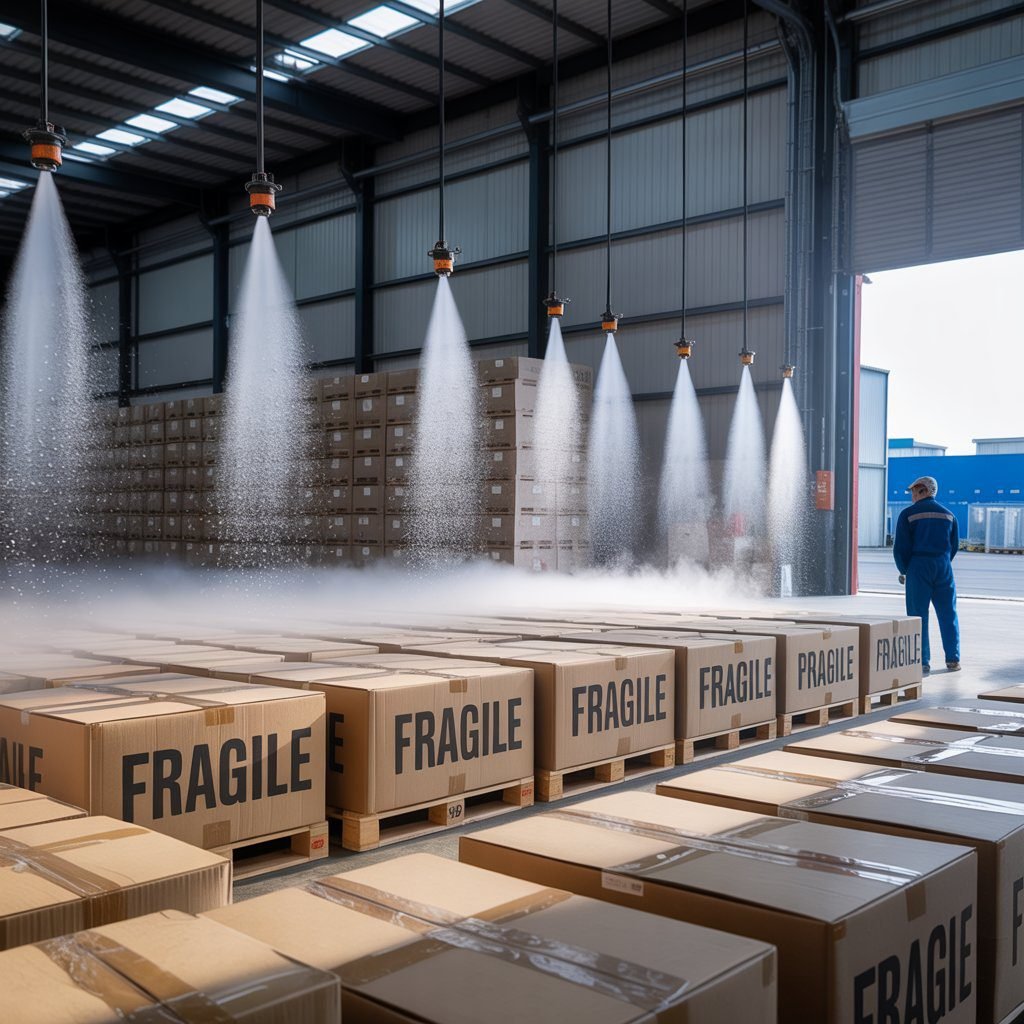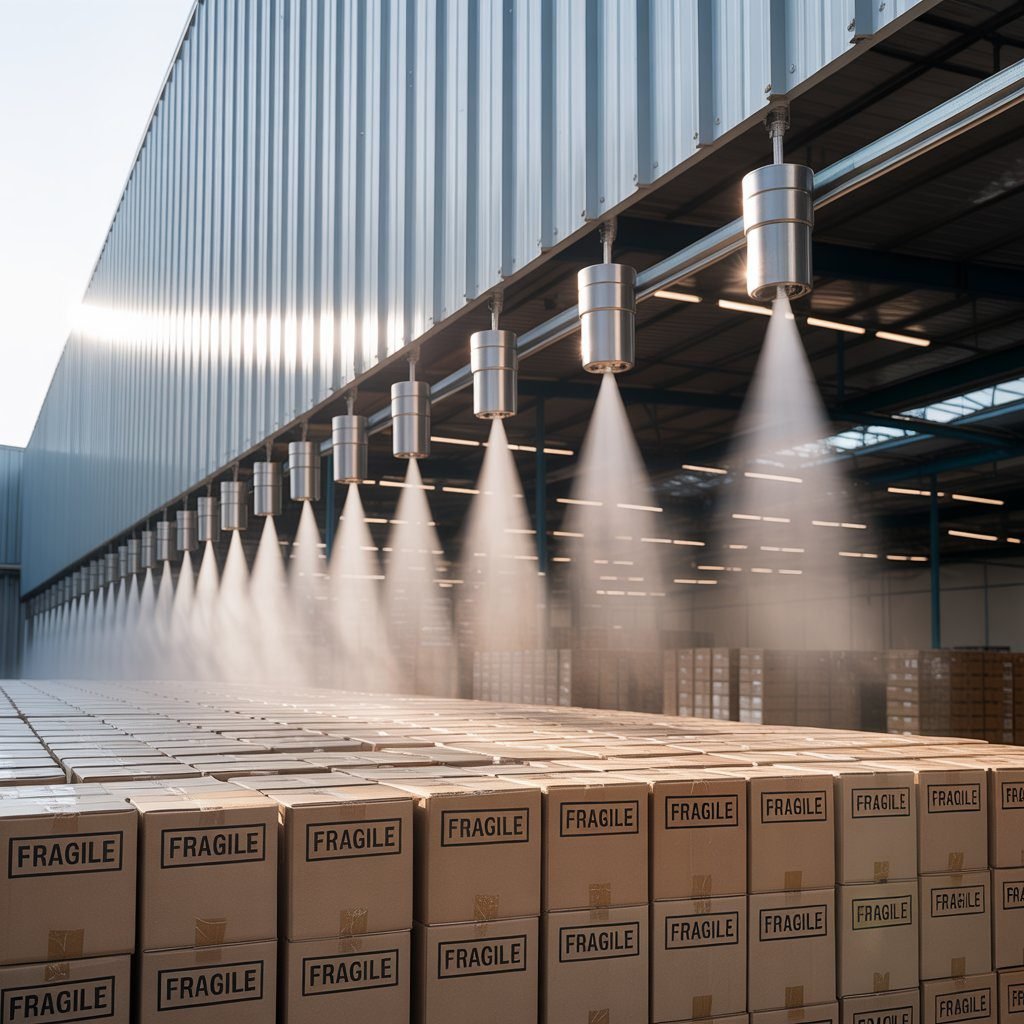A best guide about industrial and commercial applications of atmospheric fogging:
Would you like to get a best guide on industrial and commercial applications of atmospheric fogging? Let’s get started. Maintaining strict standards of hygiene is no longer good practice — it’s a business necessity. With the rise in pressure on industries and commercial structures to be kept clean and secure, atmospheric fogging has become a go-to means of mass disinfection. From warehouses and factories to hotels, gyms, offices, and retail stores, atmospheric fogging offers a predictable, time-saving way of disinfecting large spaces with precision.
Fogging in the atmosphere involves minute mist droplets, usually a disinfectant solution, being sprayed into the air by specialized fog machines. These microscopic drops, often measured in microns, sweep across confined areas and cover surfaces. Unlike manual cleansing, which might miss hidden areas or rely on the inconsistency of human effort, fogging provides coverage that is equal — reaching ceiling ceilings, behind equipment, and into vents.
In industrial settings, where machinery and work surfaces are always being used, fogging is essential. Food and beverage production facilities especially must adhere to severe sanitation codes so that no contamination at all happens. Ordinary cleaning isn’t always effective because of the complexity of the equipment or because of sheer operation size. Fogging offers a method of thoroughly disinfecting such areas without the need for dismantling equipment or halting production for long periods. This both increases safety and productivity.
Food processing plants, for example, can use fogging at changeover or on shutdown to clean product lines. The disinfectants applied are generally food-grade and toxic residue-free, maintaining product quality while meeting health standards. Not only does this impose compliance, but it also fosters customer confidence in the cleanliness of what they buy.

Warehouses, packaging houses, and distribution warehouses also benefit. With merchandise, trucks, and employees in continuous transit, microbial buildup is a significant problem. Fogging enables quick disinfection between shifts or before peak-activity periods, protecting products and employees alike. And because fogging covers large areas instantly, it reduces the need for manpower, so it’s an affordable daily sanitation solution.
Commercial buildings have also turned to fogging, especially with the recent health concerns. Office skyscrapers, co-workspaces, and mixed-use developments now rely on fogging as a means of disinfecting common spaces like conference rooms, lobbies, restrooms, elevators, and air handling systems. For building managers, the extra security boost tenants’ confidence and show that health is a priority.
Shopping centers and retail outlets utilize fogging in their everyday sanitizing routine. With so many people handling the changing rooms, doors, counters, and shopping trolleys, contamination is a huge risk. Fogging not only sterilizes surfaces but also the air around, reducing transmission of airborne microorganisms. Pre-opening or end of closing is the ideal time to do it without disrupting trading hours.

In the hotel industry, where cleanliness translates to guest satisfaction, fogging is the norm. It is employed by hotels, resorts, and vacation rentals for disinfecting between guests, leaving no surface — from bed linens to television remote controls — unturned. It provides reassurance for employees and guests alike and makes businesses stand out in a competitive market.
Fogging is used extensively by health clubs, yoga studios, and wellness centers as well. These places see heavy physical use and frequent contact between people and are thus hives of bacteria and viruses. While staff members wipe down equipment, fogging treats the whole room — floor, walls, ceiling, and ventilation system. It also facilitates easier, more routine cleaning throughout the day, allowing facilities to remain open and members safe.
Public transportation and vehicle fleets have embraced fogging too. Taxis, airplanes, buses, and trains can be fogged to protect riders and employees. The cloudy fine spray enters vents, seats, and tray tables — where hand cleaning skips by. This shortens turnaround from trip to trip, with more efficient and secure arrivals.
Healthcare services like clinics, dental clinics, and aged-care homes employ fogging to protect vulnerable patients. It reduces microbial load in treatment areas, waiting areas, and on community equipment. The majority of disinfectants used are of medical-grade standard approved to produce hospital-grade hygiene that can eliminate healthcare-associated infection.

Even educational institutions and childcare centers are now reliant on fogging. Classrooms, canteens, and toilets are disinfected to create a health-safe environment in order to minimize the risk of transmission of illness among students and staff. Fogging offers total coverage of large, typically complex areas, offering faster outcomes compared to manual cleaning alone.
What makes fogging so attractive across industries is its adaptability. Whether you’re treating a single office or an entire plant, the system can be scaled to fit. It works for routine maintenance, emergency response after an outbreak, or precautionary cleaning following public events.
In short, atmospheric fogging Birmingham is not just a cleaning product — it’s an everyday answer to the contemporary requirement of sanitization in every line of business. It improves security, saves time, decreases the labour cost, and delivers results day in and day out. Whether you’re the manager of a factory, have a hotelier, or you run a chain of retail stores, fogging provides you with the standards of cleanliness and comfort that you demand in today’s health-oriented world. You can visit this site to get more best guides.




